Objective:
Editing is the art, technique, and practice of assembling shots into a coherent sequence. The job of an editor is not simply to mechanically put pieces of a film together, cut off film slates, or edit dialogue scenes. Compositing is combining of visual elements from separate sources into single images, often to create the illusion that all those elements are parts of the same scene. Digital compositing is an essential part of visual effects that are everywhere in the entertainment industry today.
Course Outcome
At the end of the course, learners will be able to:
CO1: Understand the concepts of layer management in live footage.
CO2: Providing exposure on editing and developing new story/concept.
CO3: Understanding the importance of rotoscope and keying concepts in compositing work.
CO4: Understanding the camera concept and providing the same angle to the CG work.
CO5: Providing the complete knowledge of stereo concept and technology involved in this.
Unit: I Importing Media, Organizing Clips, First Edit
Define the clip, event, and library containers, Understand the differences between managed and external media files, Create a camera archive, Import files using Media Import and the Finder, Apply keywords to clip and clip ranges, Search and filter clips by keywords, Add notes and ratings to a clip, Create Smart Collections, Detect people and composition within clips, Understand and assign roles, Create a project, Add and rearrange clips within a primary storyline, Ripple, Roll, and Slip trim clips, Blade, replaces with gap, ripple delete, and join through edit, Perform connect edits, Create and edit in a connected storyline, Adjust audio levels, Share the project to a media file
Unit: II Revising – Enhancing – Final the Edit & Managing Libraries
Define and distinguish the two types of project duplication, Understand the replace edit options, Use markers for clip synchronization and task notes, Create and edit with an audition clip Refine project using trim to play head and trim to selection, Vary the playback speed of clips, Modify the look of clips with effects, Utilize transitions, Adjust transform and compositing controls, Create compound clips, Add and modify a lower third, Add and modify a 3D title, Split edit audio and video, Key frame audio, Color correct a clip, Export to a media file, Post media to an online host, Create a bundle for multiple platforms, Understand the XML workflow, Integrate Compressor export options – Import media as referenced and managed, Move and copy clips within and between libraries, Consolidate media files to one location, Identify manual options for new projects, Synchronize dual system recordings, Create a chroma key, Understand the multi-cam workflow.
Unit: III Rotoscopy & Keying
In this unit, Students explore the rotoscopy involves creating shapes which are used to isolate or mark elements in footage, such as characters, vehicles, buildings etc. This method of creating selections allows to perform specific operations like color correction, adding additional layers, dynamic effects etc. Rotoscopy is the first step in the process of digital compositing. Students explore keyer techniques which involve Luma key and Chroma key. This topic covers a wide knowledge about the RGB channels and its uses. It’s a unique technique teaches the fastest and most accurate way to extract an object.
Unit: IV 2D& 3D Tracking, Live Action Compositing
In this unit, student will explore the tracking the footage. This concepts teaches the how to track the live footage in 2D and 3D, it also teaches the techniques involved in this process. This method teaches the student how to track the camera in 2D and 3D layers for compositing. We teaches origins of 3D tracking technologies lie in the science of photogrammetric. Its covers how to composite various different layers into single image. In this students will learn at three general areas where CGI elements are composited. First is straightforward CGI compositing where a CGI object has been created and needs to be composited into the scene. Second, we will take a look at set extension, a rapidly expanding technique in filmmaking. Thirds, we will look at the match move, where separate programs are used to analyze the live action and provide terrain and camera data for the CGI programs
Unit: V Stereoscopy pipeline and its process, rendering and Output formats
Student will explore the pipeline of stereoscopy. In this session we cover the workflow of stereoscopy which follow the four major departments such as Rotoscopy, Matte Extraction, Clean plate and Stereo conversion process. This is the stage where we teach about the bit depth of colors and various output formats with aspect ratio. In this session we teach how to put render for broad casting and filming (size differs).
Total: 60 Hrs
 CHAT WITH A STUDENT
CHAT WITH A STUDENT